Moniek Bloks's Blog, page 55
March 9, 2024
Book News Week 11
Book News Week 11 – 11 March – 17 March 2024
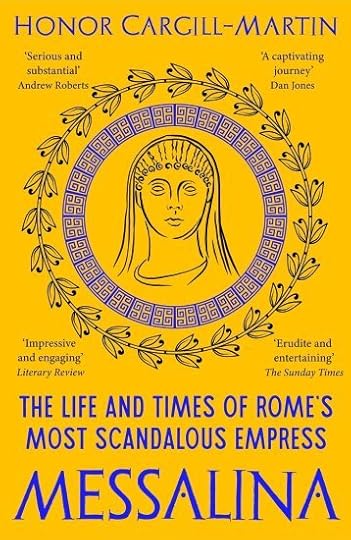
Messalina: The Life and Times of Rome’s Most Scandalous Empress
Paperback – 14 March 2024 (UK)
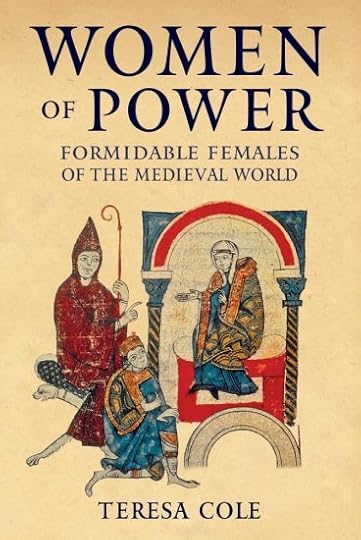
Women of Power: Formidable Females of the Medieval World
Hardcover – 12 March 2024 (US)
The post Book News Week 11 appeared first on History of Royal Women.
March 7, 2024
Queen Mary’s Bangles
Queen Mary’s Bangles each consist of “39 brilliants, the gold sides finely engraved.”1
The traditional Indian ornaments were a wedding present to the then Princess Mary of Teck from the Bombay Presidency, an administrative subdivision of India. The committee which raised the funds was chaired by Lucy Ada, Baroness Harris, whose husband was governor of Bombay.
The bangles were among the wedding presents for the then Princess Elizabeth in 1947.
The post Queen Mary’s Bangles appeared first on History of Royal Women.
March 5, 2024
Infanta Margarita at 85
Infanta Margarita of Spain was born on 6 March 1939 as the third child and second daughter of Princess María de las Mercedes of Bourbon-Two Sicilies and Infante Juan, Count of Barcelona. She was born blind.
Just a few days after her birth, she was baptised in the Spanish National Church of Santiago and Montserrat in Rome. Her godparents were her uncle Jaime and her aunt Esperanza.
She had an elder sister, Infanta Pilar, an elder brother who became King Juan Carlos I of Spain, and a younger brother, Infante Alfonso, who died at the age of 14. As the family was in exile at the time of her birth, she was born in Rome. Her father was the third son and designated heir of King Alfonso XIII of Spain. His elder brother Alfonso suffered from haemophilia and renounced his rights in 1933 to marry Edelmira Sampedro y Robato. His second brother Jaime, who was deaf, also renounced his rights in 1933. The family’s final home before being restored to the throne would be Portugal.
Margarita grew up loving music, especially rock music and was known for attending festivals. The death of her younger brother, Alfonso, and the departure of her elder brother, Juan Carlos, for the army, meant that Margarita was particularly close to her elder sister, Pilar. Margarita learned to speak nine languages fluently, and she plays the piano. She went to nursing school in Madrid and earned a diploma.1
It is said that Margarita met her future husband, Carlos Zurita, at a dinner party in 1969, and they began a discreet relationship. They were married in 1972 after Carlos had completed his doctoral thesis at Bologna University. He became a medical doctor.
Upon the wedding on 12 October 1972, the New York Times wrote, “The ceremony was held in the 16th-century Church of Santo Antonio, where 300 guests had gathered. It is near the Bourbon family residence, Villa Giralda/ The Rev. José Sebastián Bandaran, chaplain to the Spanish royal family, officiated.[…] The bride entered the church on the arm of her father and was ushered by the Duke of Albuquerque, the Duke of Granada and Col. José de Lacour. The bridegroom was accompanied by his mother, Doña Carmen Delgado y Fernández de Santaella.”2
Upon her marriage, Margarita renounced her rights to the Spanish throne, although she kept her titles. The family was restored to the throne in 1975. Margarita and Carlos went on to have two children, a son named Alfonso in 1973 and a daughter named María in 1975.
Embed from Getty ImagesEmbed from Getty ImagesIn 1979, a distant cousin bequeathed her the title of Duke of Hernani, and this request was granted by her brother in 1981, making her the 2nd Duchess of Hernani and Grandee of Spain. The following month, she was also granted the dukedom of Soria for life. The Dukedom of Hernani will, in due time, be inherited by her son. Her husband is Duke of Soria and Hernani, by right of his wife.
Together with her husband, she created the Duke and Duchess of Soria Cultural Foundation. She is the Honorary President of Madrid’s delegation of UNICEF and the Spanish Heart Foundation.
In 2009, Margarita and her husband were awarded honorary doctorates by the University of Valladolid.
Embed from Getty ImagesShe recently attended the 60th birthday party of her niece, Infanta Elena.
The post Infanta Margarita at 85 appeared first on History of Royal Women.
March 4, 2024
The Year of Isabella I of Castile – The Capitulaciones de Cervera
As the future Queen of Castile, Isabella was a desirable marriage candidate. Her half-brother, King Henry IV, tried to marry her off several times, but Isabella already knew the man of her choice – the future King Ferdinand II of Aragon.
But there would be terms and during the secret marriage negotiations, these were discussed and eventually compiled in the Capitulaciones de Cervera. Isabella was not about to hand over her future power to her husband.
The agreement stated that Ferdinand had the right to administer justice in Castile, but everything else would have to be agreed upon by Isabella. He was not even allowed to leave Castile without Isabella’s permission. He was obliged to provide 100,000 florins and an army of 4,000 lancers after the consummation of the marriage. An upfront payment of 20,000 florins, along with a pearl and ruby necklace, was also expected.
For Ferdinand, it was a humiliating document, and it seemed unthinkable that any man, much less a King, would need his wife’s permission to leave. Ferdinand signed the agreement on 5 March 1469, followed by his father King John II, on 12 March.1
Isabella’s half-brother had been kept entirely out of the loop, but Isabella had made up her mind. Her wedding to Ferdinand would take place the following October.
The post The Year of Isabella I of Castile – The Capitulaciones de Cervera appeared first on History of Royal Women.
March 3, 2024
Sisi’s birthplace – The Herzog-Max-Palais
The future Empress Elisabeth of Austria was born on 24 December 1837 at the Herzog-Max-Palais in Munich. That day, her mother, Ludovika, was planning to spend the evening with her mother, Caroline, when she suddenly went into labour at the Herzog-Max-Palais. The birth happened quickly, and the little one was born with one milk tooth, which was considered to be a good omen.
The palace was built between 1828 and 1830 by Elisabeth’s father, Duke Maximilian Joseph in Bavaria. The building consisted of three stories and was designed by Leo von Klenze. The first floor housed the apartment of Elisabeth’s mother, while the second floor had rooms for the older children. The complex also had two rectangular inner courtyards.
In addition to Elisabeth, her sister Helene was also born at the Herzog-Max-Palais.
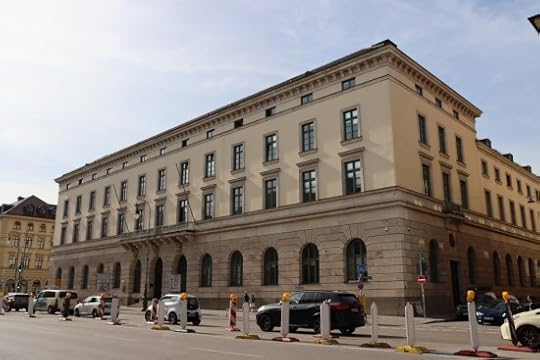 Photo by Moniek Bloks
Photo by Moniek BloksThe palace was demolished by the Nazis in 1937 to widen the street it was on. The construction of the new building was begun the following year. It wasn’t completed until 1951, and it now houses the Deutsche Bundesbank.
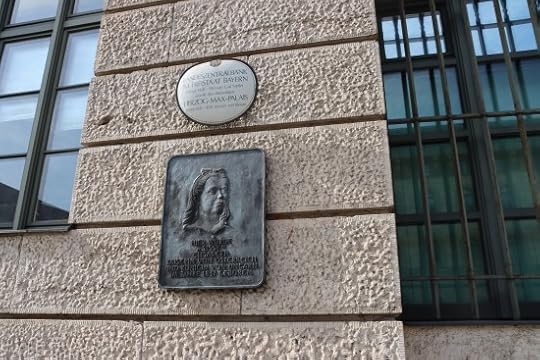 Photo by Moniek Bloks
Photo by Moniek BloksWhile the original palace no longer exists, Elisabeth’s birthplace is commemorated with a plaque. You can find it at Ludwigstraße 13.
The post Sisi’s birthplace – The Herzog-Max-Palais appeared first on History of Royal Women.
March 2, 2024
Book News Week 10 2024
Book News week 10 – 4 March – 10 March 2024
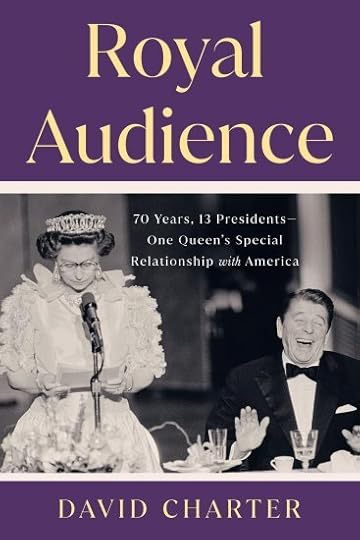
Royal Audience: 70 Years, 13 Presidents–One Queen’s Special Relationship with America
Hardcover – 5 March 2024 (UK & US)
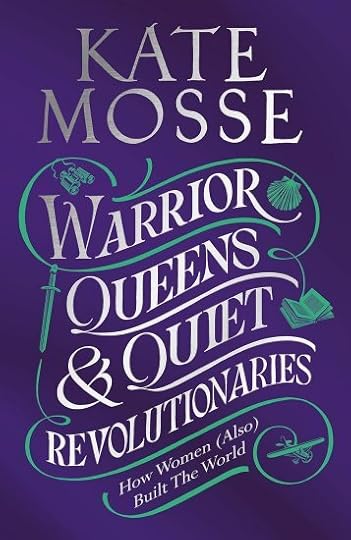
Warrior Queens & Quiet Revolutionaries
Paperback – 5 March 2024 (UK)
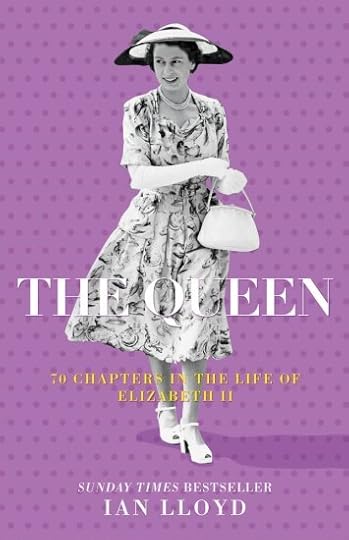
The Queen: 70 Chapters in the Life of Elizabeth II
Paperback – 5 March 2024 (US)
The post Book News Week 10 2024 appeared first on History of Royal Women.
March 1, 2024
The Year of Isabella I of Castile – The rivalry with Joanna la Beltraneja (Part two)
The War of the Castilian succession would continue for four years. After the Battle of Toro in March 1476, Joanna and Afonso left Castile in June. However, troops remained stationed in Castile. Most of the time, Joanna was left in Portugal, and she often went long periods without seeing her husband. However, her exact whereabouts can not always be established.
They soon lost the support of Diego López de Pacheco, 2nd Duke of Escalona, and he “promised to serve them [Isabella and Ferdinand] in public and private from then on with complete faithfulness and loyalty, be it against the Portuguese King, his niece [Joanna], the French, their allies or anyone else.”1 Archbishop Carrillo also soon pledged his loyalty to Isabella. Another big blow came on 30 June 1478 when Isabella gave birth to a son named John. To some, the birth of a male heir was the proof that God had chosen Isabella as Queen.
It was Isabella’s aunt, Beatriz of Portugal, Duchess of Viseu (who was also King Afonso’s sister-in-law) who made the first approach for peace. Isabella agreed to meet her at the frontier town of Alcántara. They talked for three days, and Isabella insisted on Joanna being sent to a convent. She also refused to name Joanna as a Princess as “giving her that title is to confess that she is the daughter of a king and queen. And the queen [Isabella] thinks that… this in itself is sufficient reason to stop talking about peace.”2 Negotiations dragged on for another six months.
In the final agreement, Joanna was forced to choose between an engagement with Isabella’s newborn son, which he could renege on when he was 14, or taking a nun’s vows and entering a cloistered Portuguese convent. The 18-year-old Joanna chose to enter a convent.
One chronicler wrote, “She, with no less grief than her own sadness and with painful lamentations of her own and of all her people, left the title of Queen and took the name of Doña Juana. She stripped her body of the brocades and silks she wore, and they dressed her in the brown habits of St Clare, taking from her the royal crown of Castile and Portugal, with which she was titled, and cutting her hair off like a poor maiden.”3
Joanna first entered the monastery of Santa Clara in Santarém on 5 November 1479, and she completed the novitiate a year later. After the town was struck by plague, she was allowed to move to Coimbra, where she professed as a Poor Clare. Her profession was recorded, “I, Doña Juana, promise to God, and Saint Mary the Virgin, and Saint Francis, and to Saint Clare,, and to all the saints, to continue all the time of my life in obedience and chastity under this rule, given and granted to our order by Pope Urban IV.”4 The following year, her husband, King Afonso V, died at the age of 49.
It wasn’t until 1500 that there was some improvement in Joanna’s life. She was given the title of Excellent Lady, and she was allowed to leave the convent for Lisbon, where she lived in a house and received funds from the court. From King John III, she also received gifts of cloth and perfumes. Joanna survived her great rival Isabella, who died in 1504 at the age of 53. However, Joanna’s response has not been left to us. After her death, it was rumoured that Isabella’s widower wanted to marry Joanna, but this came to nothing.5
Joanna died on 28 July 1530. Lope Hurtado wrote to Emperor Charles V’s wife, Isabella of Portugal, that “the excellent lady died on the XXVIII of last [July], while she was still well, she had just given alms. She had an accident6, and then he took her without confessing. She was buried in Santa Clara.”7
To the end of her life, she signed her letter with “I, the Queen.”8
The post The Year of Isabella I of Castile – The rivalry with Joanna la Beltraneja (Part two) appeared first on History of Royal Women.
February 29, 2024
Queen Mary’s Fringe Tiara
Queen Mary’s Fringe Tiara is “formed from 47 graduated brilliant- and rose-set tapering bars, divided by 46 narrow spikes, set lozenge-fashion with nine graduated brilliants at the centre, diminishing to five at either side; de-mountable for use as a necklace.”1
The Fringe Tiara was made in 1919 for Queen Mary in the then-fashionable Russian kokoshnik style by Garrard. The diamonds came from a tiara/necklace, which had been purchased by Queen Victoria in 1893 as a wedding present for Mary and which she wore on her wedding day.
 (public domain)
(public domain)This design was very popular, and several members of the royal family had tiaras in a similar style. In 1936, Queen Mary gave the tiara to the future Queen Elizabeth the Queen Mother, who subsequently loaned it to the future Queen Elizabeth II for her wedding day in 1947.
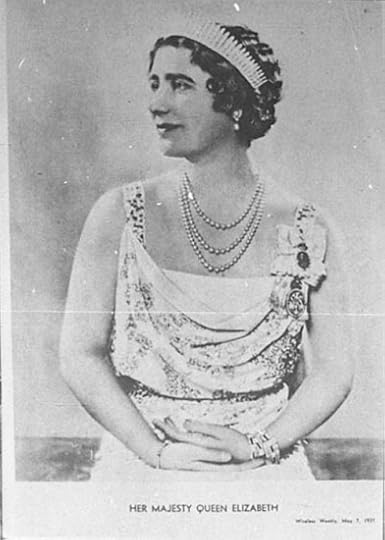 (public domain)
(public domain)Queen Elizabeth II inherited the tiara upon the death of her mother in 2002.
Embed from Getty ImagesThe post Queen Mary’s Fringe Tiara appeared first on History of Royal Women.
February 27, 2024
The Year of Isabella I of Castile – The rivalry with Joanna la Beltraneja (Part one)
The future Queen Isabella’s half-brother, King Henry IV of Castile, married Joan of Portugal in May 1455, with the papal dispensation having arrived at the end of 1453, as the pair were first cousins. A copy of this dispensation was not found in the archives of the Vatican, although this does not necessarily prove it didn’t exist. Their daughter’s later supposed illegitimacy was based upon a void marriage between first cousins without dispensation.
King Henry’s first marriage to the future Queen Blanche II of Navarre had remarried unconsummated, leading to rumours of King Henry’s impotence. At the time, one of the King’s favourites was Beltrán de la Cueva, 1st Duke of Alburquerque.
In any case, it took until 1462 before Joan gave birth to a daughter named Joanna. A few days later, little Joanna was baptised, and her ten-year-old aunt Isabella acted as one of her godmothers.1 Joanna was sworn in as heiress on 9 May 1462, with Isabella and her brother Alfonso being the first to swear.
However, it appears that several nobles already doubted Joanna’s legitimacy, not in the least because of jealousy towards Beltrán de la Cueva, who held the King’s favour. Isabella later wrote that she knew why some objected to swearing the oath. She wrote, “It was something she [the Queen] had demanded because she knew the truth about her pregnancy and was taking precautions.”2 Rumours about Beltrán de la Cueva being little Joanna’s biological father were beginning to circulate.
It is impossible to tell if Joanna was Beltrán de la Cueva’s daughter, but we know Joan conceived again within the year. Tragically, she lost the child, a boy, at six months. It was rumoured that a Jewish doctor named Samaya had used an early form of artificial insemination to help things along. In any case, Joanna was born, and Henry never denied that she was his biological daughter. Nevertheless, the paternity concerns made their way to Rome. A report from Pope Pius II stated that “It was said that the queen… was impregnated without losing her virginity. Some said that the semen poured into the entrance [of the vagina] had penetrated into the most hidden places inside of her. Others believed a man other than Henry was responsible and that he so ardently desired an heir that he created the girl as his own because it was that woman who had given birth.”3
These rumours were the perfect fuel for a rebellion.
Joanna was just two years old when a manifesto of complaints and grievances was issued against King Henry by several nobles. This led to the Representation of Burgos in 1464, where Henry was forced to recognise Alfonso as the legitimate heir.4 This was agreed upon with the condition that Alfonso would one day marry Joanna. However, Henry soon reconsidered, and this led to a ceremonial deposition in effigy in 1465, and the 11-year-old Alfonso was crowned as rival King. Meanwhile, Isabella was still at court with Henry and Joan.
Isabella and Alfonso were reunited in 1467 when he triumphantly rode into Segovia as Queen Joan fled. Isabella asked to return to her mother at Arévalo, and at the end of the year, they celebrated Alfonso’s 14th birthday with the three of them. They stayed there until they were forced to flee due to an outbreak of the plague at the end of June 1468. Alfonso fell ill at Cardeñosa, and for four days, he fought for his life. His death was expected, and Isabella wrote, “And you all know that in the moment that the Lord decided to take his life, succession of the kingdoms and royal lands of Castile and Leon will, as his legitimate heiress and successor, pass to me.”5
Alfonso died on 5 July 1468. The battle was now between Joanna and Isabella.
Joanna was raised by the Mendoza family between 1465 and 1470. And then by Juan, Marqués de Villena from 1470 to 1475. Joanna’s mother, after having fled in 1467, had fallen pregnant by a lover, which only seemed to bolster the rumours of Joanna’s illegitimacy, although she continued to support her daughter’s claim. During this time, Joanna was considered for several marriages. In 1470, she was betrothed to the Duke of Guyenne, but he died in 1472.
Her father died on 11 December 1474, and her aunt Isabella successfully claimed the throne of Castile. It is not clear if Joanna and her mother were present when Henry died. After a few more marriage proposals, Joanna was married to her maternal uncle, King Afonso V of Portugal, on 29 May 1475. King Afonso invaded Castile to support Joanna’s claim shortly after their betrothal ceremony on 1 May. Shortly after her marriage, her mother, Joan, also died. Joanna was still only 13 years old, while her aunt was a mature married woman with a daughter of her own. Afonso did not consummate the marriage with his 13-year-old niece as he went to war.
Meanwhile, Joanna sent out letters to the cities and towns of Castile which read, “During his lifetime, he always wrote and swore, both in public and in private, to all those prelates and grandees who asked about it and to many other trustworthy people that he knew me to be his true daughter.”6 She also claimed that her father had named as his heiress on his deathbed and that he had been poisoned by Isabella and her husband, Ferdinand. She called for Isabella to be punished, saying, “You must all rise and join, serving, helping and ensuring that this abominable, detestable action be punished.”7
Part two coming soon.
The post The Year of Isabella I of Castile – The rivalry with Joanna la Beltraneja (Part one) appeared first on History of Royal Women.
February 25, 2024
Five royal marriages with a large age difference
Royal marriages were mostly for convenience, prestige and offspring, and so it was quite common for the bride and groom to be quite different and mismatched. This included their ages, so here are five royal marriages with large age differences.
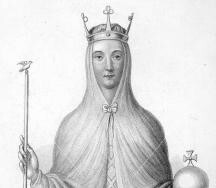 (public domain)
(public domain)1. Adeliza of Louvain and King Henry I of England
Adeliza of Louvain was about 18 years old when she married King Henry I of England, who was about 53. This makes an age difference of about 36 years. He had been married once before to Matilda of Scotland, who had died in 1118. His only legitimate son, Willian, had died in the White Ship disaster in 1120, and he had just one legitimate daughter and a score of illegitimate children.
The wedding took place on 29 January 1121, and she was crowned the following day. She wasn’t very politically active, but he kept her with him on his travels, probably in the hopes of fathering a child. She was widowed in 1135 and remarried in 1138 to William d’Aubigny, 1st Earl of Arundel, and they had at least seven children together. After her death in 1151, she was buried with her first husband at Reading.
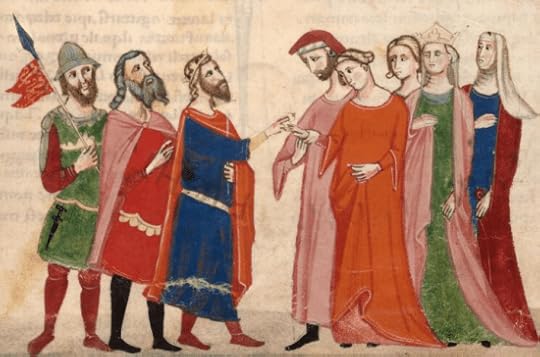 (public domain)
(public domain)2. Margaret of France & King Edward I of England
Margaret of France was about 20 years old when she married the 60-year-old King Edward I of England. He had been widowed in 1290, and although he had six surviving children, he had just one surviving son. Margaret quickly fell pregnant after the wedding, and she gave birth to two sons in quick succession. A daughter named Eleanor was born in 1306, but she did not survive to adulthood. Margaret also forged a good relationship with her stepchildren despite the fact that she was only a few years older. Margaret was widowed in 1307, and she was deeply grieved. She never remarried, even though she was only in her late twenties. She died in 1318.
3. Mary Stewart & James Hamilton, 1st Lord Hamilton
Mary was the daughter of King James II of Scotland and Mary of Guelders. She was born in 1453 and was first married to Thomas Boyd, Earl of Arran, before 26 April 1467. They had two children together. Thomas and his father were accused of treason, and despite Mary’s attempts to clear their names, they were attained, and the marriage was declared void in 1473. Her brother, King James III, had another alliance in mind with the much older James Hamilton. They were married in 1474 when Mary was around 21, and James was about 60 years old. They went on to have three children together before she was widowed in 1479. Mary died in 1488.
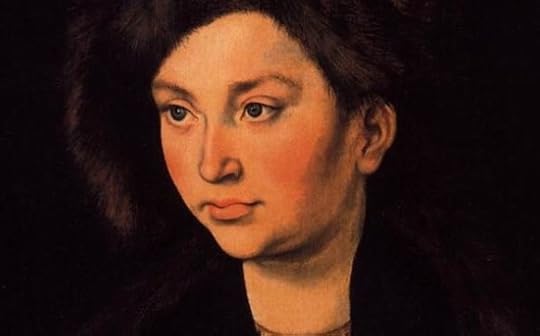 (public domain)
(public domain)4. Catherine of Saxony & Sigismund, Archduke of Austria
Catherine was born on 24 July 1468 as the daughter of Albert III, Duke of Saxony and Sidonie of Poděbrady. She was just 16 years old when she married the 56-year-old Sigismund, Archduke of Austria, who had previously been married to Eleanor Stewart. She was pulled into court intrigues by one of her husband’s mistresses, who accused her of trying to poison him. In the same year as their marriage, Sigismund was largely dismissed from power by Emperor Frederick III. The marriage remained childless, and Sigismund died in 1496. Catherine remarried not much later to Eric I, Duke of Brunswick-Lüneburg, and they had a short-lived daughter together. Catherine died in 1524.
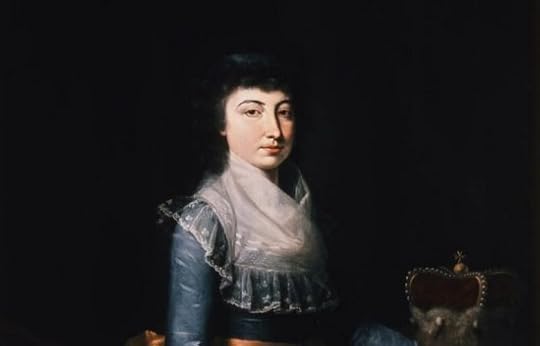 (public domain)
(public domain)5. Maria Leopoldine of Austria-Este & Charles Theodore, Elector of Bavaria
Maria Leopoldine of Austria-Este was born on 10 December 1776 as the daughter of Ferdinand Karl, Archduke of Austria-Este and Maria Beatrice d’Este, Duchess of Massa. She was just 18 years old when she was selected as a bride for the 70-year-old Charles Theodore, Elector of Bavaria, in 1795. He had been widowed in 1794 and only had illegitimate children. His only legitimate son had lived for just one day. Maria Leopoldine was said to be shocked but settled in her fate. She reportedly said. “Thank God, he is already so old.”1 As his wife, she repeatedly snubbed him, and he died just four years later. She remarried to Count Ludwig von Arco in 1804, and they went on to have three children together. She died in a carriage accident on 23 June 1848.
The post Five royal marriages with a large age difference appeared first on History of Royal Women.



